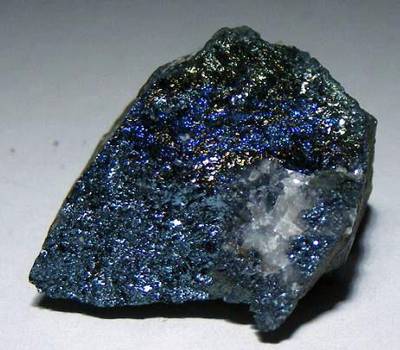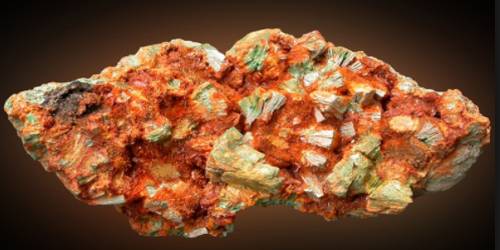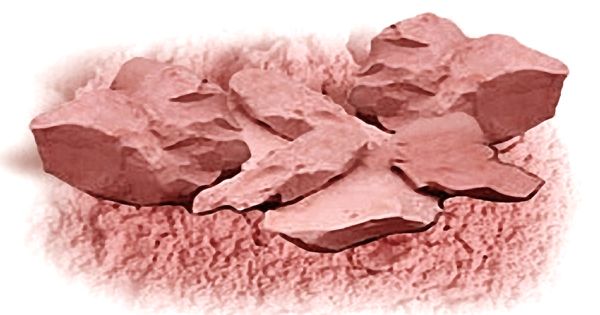Athabascaite is a member of the copper selenide minerals and forms with other copper selenides. It was first discovered by S. Kaiman in 1949 while he was researching radioactive materials around Lake Athabasca. Kaiman was conducting research near Uranium City, Saskatchewan where mass amounts of uranium mines were present.
General Information
- Category: Selenide mineral
- Formula: Cu5Se4
- Crystal system: Orthorhombic
- Unknown space group.

Properties
Athabascaite often contains umangite as inclusions and stained carbonate vein material as stringers and veinlets. When coupled with umangite, the mineral forms lath-shaped slender and elongated grains averaging 20 by 50 micrometers. Athabascaite originally appeared as finer grained than the surrounding material, possessing a core of umangite.
- Color: Light grey, bluish-gray to white
- Crystal habit: As anhedral inclusions and lath-shaped crystals, also massive
- Mohs scale hardness: 2.5
- Luster: Metallic
- Diaphaneity: Opaque
- Specific gravity: 6.59 (calculated)
The color of athabascaite is typically light gray, but can also be white, white-gray, and blue-gray. It has a hardness of approximately 2.50 on the Mohs scale. When exposed to polarized light, it displays a range of colors varying from creamy white to dark blue.
Geologic occurrence
After being discovered in Canada, a few other samples have been found in Petrovice, Vysočina Region, Predborice, and Koksin Hill, Czech Republic; Puy-de-Dôme, France; Kalmar, Sweden; La Rioja Province, Argentina; and most recently Zaire (Democratic Republic of Congo); all of which were found in or near uranium mines. In Argentina and Sweden, it is associated with umangite and berzelianite. In the Czech Republic, it occurs with berzelianite, eucairite, crookesite, tyrrellite, ferroselite, bukovite, krutaite, calcite, and dolomite.
Infoormation Source:








![Report on Corporate Social Responsibility and Small Medium enterprise of Southeast Bank LTD [PART-2]](https://assignmentpoint.com/wp-content/uploads/2013/03/SEB-110x55.jpg)







